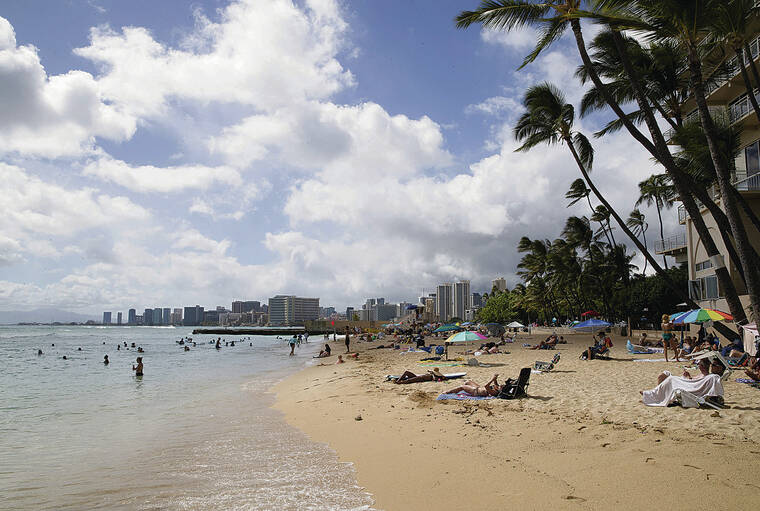‘We see brown everywhere, not much green, smelly garbage cans, bare patches in grass, cracked and broken steps, dry water fountains, slimy cement, pools of fetid standing water, rusted pipes, an unsanitary and unhygienic wasteland.”
No, those words aren’t the logline for a post-apocalyptic movie. They come from my Kaimana Beach notebook dating back more than a decade. One entry stands out. In a conversation with then-Honolulu Mayor Peter Carlisle (2010-2013), I shared my observations about the beach. His reply, “If you want to clean up this mess, you pay for it.” A disheartening exchange, I’m sure, for both of us.
But it does demonstrate the emotion and frustration that pit public policies and priorities against our reverence for place. For the human yearning for a regenerative connection with the natural world. Hawaiian indigenous wisdom is grounded in a primal and spiritual connection to specific places. Kaimana Beach is one such place. Its history, its genealogy, its awe-inspiring proximity to Diamond Head (Mount Leahi).
‘Aina is not just ocean or land — but a heart issue for Hawaiians. Environmental scientists value the holism and sustainability of these principles today more than ever.
The conditions at this beloved beach demoralize local people, taxpayers, who have watched it degenerate. Don’t our families deserve the clean and beautiful beaches our unsustainable tourists enjoy? It truly does hurt our hearts.
Kaimana Beach marks milestones in my life. A place for making memories. As a University of Hawaii-Manoa graduate student, I hauled my books there and slogged through Hegel and Plato. I enjoyed bento and talk-story with friends who reveled in being together sharing glorious sunsets and swims. I grieved when ashes were spread in waves taking the spirits of loved ones back to nature.
Why have efforts to preserve the special ambiance of the last local beach in Honolulu stalled through the years? A survey of the numerous task forces, environmental impact statements, resolutions, scientific and architectural plans, surpasses the limits of this commentary.
Consider the overlapping interests — the Waikiki Natatorium War Memorial organizations, city agencies, Diamond Head Neighborhood Board, state Historic Preservation Division, park users, commercial businesses — which have complicated compromise. And thwarted the efforts of four previous mayors and City Councils.
Flash forward to June 2022. Mayor Rick Blangiardi and the City Council now inherit this negligence. Council Chairman Tommy Waters (whose district includes Kaimana Beach) reports that the city Department of Facility Maintenance has been awarded $1 million in fiscal year 2022 specifically to “plan, design and construct shower improvements for Kaimana Beach Park.” This is a welcome and long-overdue solution to the rusted pipe that now serves as a “shower.”
Any crumb from the city to enhance Kaimana is good news. Critics might add that it’s too little too late. What about the disgraceful rotting of the Natatorium with its elegant arch, long-shuttered and hidden by fences and parked cars? Might it be honored at another more fitting locale? Then there are the picnic areas with dirt patches on spare grass and little shade. And surely the Health Department would disapprove of the fetid standing water and broken drinking fountain near the Diamond Head entrance to the beach.
Blangiardi recently signed the budget. We ask him for the broadest interpretation of “plan, design and construct shower improvements” to include landscape and regenerate the entire area adjacent to the beach.
Do we still feel joy when we visit the beach? Of course. And a grateful public says “mahalo nui loa” to the officials and advocates for their efforts over the years. But now is the time for decisive leadership to restore the last remaining beach on Oahu’s south shore. This is a sacred trust broken too many times.
Our commitment remains to the mission of the Kaimana Beach Coalition, a nonprofit founded by ocean-lover Rick Bernstein in 1990: “To protect this precious beach from commercialization, environmental degradation and to assure public access to this nurturing gathering place.”
Nancie Caraway, Ph.D., is a political scientist and advocate, and a former first lady of Hawaii.

